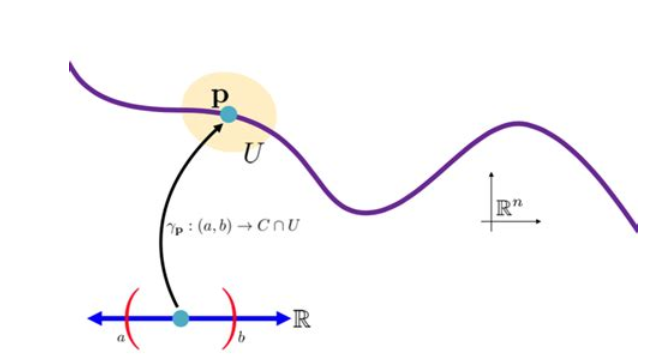离散曲线数据存储与导出技术详解
问题背景与数学模型
在CAD系统开发中,我们经常需要处理三维空间中的离散曲线数据。设存在一组平行于xyxyxy平面的曲线,每条曲线位于不同的高度ziz_izi上,其中i=1,2,…,ni=1,2,\ldots,ni=1,2,…,n。每条曲线由一系列离散点组成,可表示为:
C(zi)={Pj(xj,yj,zi)∣j=1,2,…,mi}C(z_i) = \{P_j(x_j, y_j, z_i) \mid j=1,2,\ldots,m_i\}C(zi)={Pj(xj,yj,zi)∣j=1,2,…,mi}
其中PjP_jPj为曲线上的点,mim_imi为第iii条曲线上的点数。这种数据结构使用std::map<double, std::vector<gp_Pnt>>来存储,其中键为zzz值,值为对应zzz平面上的点集。

基础实现方案
方案一:兼容性最佳的实现
#include <fstream>
#include <iostream>
#include <map>
#include <vector>
#include <gp_Pnt.hxx>/*** @brief 将离散曲线数据保存到文本文件* @param pointsByz1 包含z值和对应点集的map* @param filename 输出文件名*/
void savePointsToTxtBasic(const std::map<double, std::vector<gp_Pnt>>& pointsByz1, const std::string& filename) {std::ofstream outFile(filename);if (!outFile.is_open()) {std::cerr << "Error: Cannot open file " << filename << " for writing." << std::endl;return;}// 设置高精度输出,确保数值准确性outFile.precision(15);outFile.setf(std::ios::fixed);// 遍历所有z平面for (auto it = pointsByz1.begin(); it != pointsByz1.end(); ++it) {double currentZ = it->first;const std::vector<gp_Pnt>& currentPoints = it->second;// 输出当前z平面的所有点for (size_t i = 0; i < currentPoints.size(); ++i) {const gp_Pnt& point = currentPoints[i];outFile << point.X() << ","<< point.Y() << ","<< currentZ << "\n";}}outFile.close();std::cout << "Successfully saved " << pointsByz1.size() << " z-planes to " << filename << std::endl;
}// 测试函数
void testBasicImplementation() {std::map<double, std::vector<gp_Pnt>> pointsByz1;// 创建第一个z平面(z=0.5)的数据std::vector<gp_Pnt> plane1;plane1.push_back(gp_Pnt(1.23456789, 2.3456789, 0.0));plane1.push_back(gp_Pnt(3.45678901, 4.56789012, 0.0));pointsByz1[0.5] = plane1;// 创建第二个z平面(z=1.0)的数据std::vector<gp_Pnt> plane2;plane2.push_back(gp_Pnt(5.67890123, 6.78901234, 0.0));plane2.push_back(gp_Pnt(7.89012345, 8.90123456, 0.0));pointsByz1[1.0] = plane2;// 保存数据savePointsToTxtBasic(pointsByz1, "basic_output.txt");
}int main() {testBasicImplementation();return 0;
}
高级实现方案
方案二:支持多种输出格式的实现
#include <fstream>
#include <iostream>
#include <map>
#include <vector>
#include <iomanip>
#include <gp_Pnt.hxx>// 输出格式枚举
enum class OutputFormat {CSV, // 逗号分隔SPACE, // 空格分隔TAB, // 制表符分隔JSON // JSON格式
};class PointDataExporter {
private:const std::map<double, std::vector<gp_Pnt>>& data;OutputFormat format;// 获取分隔符char getDelimiter() const {switch (format) {case OutputFormat::CSV: return ',';case OutputFormat::SPACE: return ' ';case OutputFormat::TAB: return '\t';default: return ',';}}public:PointDataExporter(const std::map<double, std::vector<gp_Pnt>>& pointsData, OutputFormat fmt = OutputFormat::CSV): data(pointsData), format(fmt) {}/*** @brief 导出数据到文件* @param filename 输出文件名* @param includeHeader 是否包含文件头*/bool exportToFile(const std::string& filename, bool includeHeader = true) const {std::ofstream outFile(filename);if (!outFile.is_open()) {std::cerr << "Error: Cannot open file " << filename << std::endl;return false;}outFile.precision(15);outFile.setf(std::ios::fixed);if (includeHeader && format != OutputFormat::JSON) {outFile << "# X-coordinate, Y-coordinate, Z-plane-value\n";}char delimiter = getDelimiter();if (format == OutputFormat::JSON) {outFile << "{\n \"points\": [\n";}bool firstZPlane = true;bool firstPointInPlane = true;for (const auto& zPlane : data) {double zValue = zPlane.first;const auto& points = zPlane.second;if (format == OutputFormat::JSON && !firstZPlane) {outFile << ",\n";}for (size_t i = 0; i < points.size(); ++i) {const gp_Pnt& point = points[i];if (format == OutputFormat::JSON) {if (firstPointInPlane && firstZPlane) {outFile << " ";firstPointInPlane = false;} else if (!firstPointInPlane) {outFile << ",\n ";}outFile << "{ \"x\": " << point.X()<< ", \"y\": " << point.Y()<< ", \"z\": " << zValue << " }";} else {outFile << point.X() << delimiter<< point.Y() << delimiter<< zValue << "\n";}firstZPlane = false;}}if (format == OutputFormat::JSON) {outFile << "\n ]\n}";}outFile.close();std::cout << "Exported " << data.size() << " z-planes to " << filename << std::endl;return true;}
};void testAdvancedExporter() {std::map<double, std::vector<gp_Pnt>> pointsData;// 创建测试数据std::vector<gp_Pnt> curve1;for (int i = 0; i < 3; ++i) {curve1.push_back(gp_Pnt(i * 1.0, i * 2.0, 0.0));}pointsData[1.5] = curve1;std::vector<gp_Pnt> curve2;for (int i = 0; i < 2; ++i) {curve2.push_back(gp_Pnt(i * 1.5 + 0.1, i * 2.5 + 0.1, 0.0));}pointsData[2.8] = curve2;// 导出不同格式PointDataExporter exporter1(pointsData, OutputFormat::CSV);exporter1.exportToFile("advanced_csv.txt");PointDataExporter exporter2(pointsData, OutputFormat::JSON);exporter2.exportToFile("advanced_json.txt");
}int main() {testAdvancedExporter();return 0;
}
数学分析与优化
数据存储效率分析
设共有nnn个zzz平面,第iii个平面有mim_imi个点,则总点数为:
M=∑i=1nmiM = \sum_{i=1}^{n} m_iM=i=1∑nmi
存储空间复杂度为O(n+M)O(n + M)O(n+M),其中nnn为map的大小,MMM为所有点的总数。
文件格式优化
对于大规模数据,我们可以采用二进制格式存储以提高效率:
#include <fstream>
#include <iostream>
#include <map>
#include <vector>
#include <gp_Pnt.hxx>class BinaryPointExporter {
public:/*** @brief 保存数据到二进制文件* @param pointsByz1 输入数据* @param filename 输出文件名*/static bool saveToBinary(const std::map<double, std::vector<gp_Pnt>>& pointsByz1, const std::string& filename) {std::ofstream outFile(filename, std::ios::binary);if (!outFile) return false;// 写入文件头:版本号和z平面数量int version = 1;size_t numZPlanes = pointsByz1.size();outFile.write(reinterpret_cast<const char*>(&version), sizeof(version));outFile.write(reinterpret_cast<const char*>(&numZPlanes), sizeof(numZPlanes));// 写入每个z平面的数据for (const auto& zPlane : pointsByz1) {double zValue = zPlane.first;const auto& points = zPlane.second;size_t numPoints = points.size();// 写入z值和点数outFile.write(reinterpret_cast<const char*>(&zValue), sizeof(zValue));outFile.write(reinterpret_cast<const char*>(&numPoints), sizeof(numPoints));// 写入所有点for (const auto& point : points) {double x = point.X();double y = point.Y();outFile.write(reinterpret_cast<const char*>(&x), sizeof(x));outFile.write(reinterpret_cast<const char*>(&y), sizeof(y));}}outFile.close();return true;}/*** @brief 从二进制文件加载数据*/static bool loadFromBinary(const std::string& filename, std::map<double, std::vector<gp_Pnt>>& pointsByz1) {std::ifstream inFile(filename, std::ios::binary);if (!inFile) return false;int version;size_t numZPlanes;inFile.read(reinterpret_cast<char*>(&version), sizeof(version));inFile.read(reinterpret_cast<char*>(&numZPlanes), sizeof(numZPlanes));for (size_t i = 0; i < numZPlanes; ++i) {double zValue;size_t numPoints;inFile.read(reinterpret_cast<char*>(&zValue), sizeof(zValue));inFile.read(reinterpret_cast<char*>(&numPoints), sizeof(numPoints));std::vector<gp_Pnt> points;points.reserve(numPoints);for (size_t j = 0; j < numPoints; ++j) {double x, y;inFile.read(reinterpret_cast<char*>(&x), sizeof(x));inFile.read(reinterpret_cast<char*>(&y), sizeof(y));points.emplace_back(x, y, 0.0);}pointsByz1[zValue] = std::move(points);}inFile.close();return true;}
};void testBinaryExport() {std::map<double, std::vector<gp_Pnt>> originalData;// 创建测试数据std::vector<gp_Pnt> curve;for (int i = 0; i < 100; ++i) {double angle = i * 0.0628; // 约2π/100curve.emplace_back(std::cos(angle) * 10.0, std::sin(angle) * 10.0, 0.0);}originalData[3.14] = curve;// 保存到二进制文件BinaryPointExporter::saveToBinary(originalData, "binary_data.bin");// 从文件加载std::map<double, std::vector<gp_Pnt>> loadedData;if (BinaryPointExporter::loadFromBinary("binary_data.bin", loadedData)) {std::cout << "Successfully loaded " << loadedData.size() << " z-planes from binary file." << std::endl;}
}int main() {testBinaryExport();return 0;
}
性能比较与最佳实践
文本格式 vs 二进制格式
| 特性 | 文本格式 | 二进制格式 |
|---|---|---|
| 文件大小 | 较大(约3倍) | 较小 |
| 可读性 | 高 | 低 |
| 读写速度 | 较慢 | 较快 |
| 精度保持 | 可能损失精度 | 精确保持 |
| 跨平台兼容性 | 高 | 需要注意字节序 |
推荐的最佳实践
- 对于调试和小数据集:使用文本格式,便于查看和验证数据
- 对于生产环境和大数据集:使用二进制格式,提高IO性能
- 对于数据交换:考虑使用标准化格式如JSON或CSV
- 精度要求高时:使用二进制格式避免文本转换中的精度损失
数学上,二进制格式的存储效率接近理论最优值,每个坐标值仅需8字节存储空间,而文本格式需要更多的字符来表示相同的数值。
通过以上实现方案,开发者可以根据具体应用场景选择最适合的数据导出方式,在保证功能正确性的同时优化系统性能。
